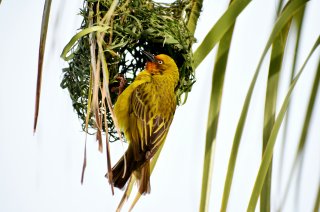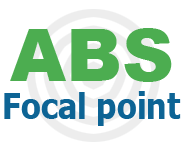
Can I collect genetic resources abroad or order genetic resources from abroad?
Principles
You can collect genetic resources abroad or order genetic resources from abroad, but only after agreement with the provider country, on the basis of their applicable rules and regulations. You have to document proof of such agreement including the benefit-sharing conditions attached to the agreement.
The relevant international agreements, i.e. the CBD, the Nagoya Protocol, the ITPGRFA, and the PIP Framework, all aim to facilitate the international exchange of genetic resources. The Nagoya Protocol provides clear procedures to be followed in acquiring and granting access and aims to increase legal certainty. The ITPGRFA facilitates smooth international exchange of genetic resources within a specified group of crops by establishing the MLS with its standardised access under the SMTA. The PIP Framework aims to improve pandemic influenza preparedness by establishing a system for the global sharing of influenza viruses with human pandemic potential and access to vaccines and sharing of other benefits.
Your obligations are derived from the principle that countries have sovereign rights over their genetic resources, and that, as a consequence, you may have to obtain permission to collect or obtain these resources and use them. This permission is known as prior informed consent (PIC). In order to obtain PIC, you will have to agree with the provider country on the benefit-sharing conditions applicable to your use, referred to as the mutually agreed terms (MAT). The permission for access and use (that is, the PIC) needs to come from the appropriate competent national authority (CNA) of the provider country. If you are unclear about the rules to follow in the provider country, you may contact that country’s national focal point on ABS. Contact details may be found on the CBD website and the ABS Clearing-House website.
Holders of ex situ collections under the management and control of the government and in the public domain have often been delegated the authority to sign an MTA as provider for distribution purposes. This can be the SMTA under the ITPGRFA. However, in some countries this delegated mandate is limited to the distribution of genetic resources for the purpose of fundamental research.
A country that has signed the CBD should do its best to facilitate access to genetic resources on MAT. In your role as a user, you should be willing to collaborate with the CNA of the provider country to facilitate the granting of PIC and the establishment of MAT. No guarantee that access can be obtained can be given beforehand. A provider country always retains its national sovereignty when it comes to exploitation of its genetic resources, and can deny a request, indicating the reasons for that.
Measures taken by user countries under the Nagoya Protocol will include the establishment of designated checkpoints that collect or receive relevant information on access to genetic resources, such as PIC or other data (Article 17 of the Protocol). In the Netherlands, the Netherlands Food and Consumer Product Safety Authority (NVWA) is the designated checkpoint.
The basic obligations on an EU user who wishes to access genetic resources from abroad are laid down in Article 4 of the EU Regulation 511/2014, which gives details of the information on the conditions of access to a genetic resource that you have to document as a user.
The Nagoya Protocol does not specify what constitutes fair and equitable sharing of the benefits arising from the use of genetic resources and the associated traditional knowledge. It is up to the provider and user of the genetic resources to agree on this. The Protocol merely stresses that these terms need to be mutually agreed.
If you use genetic resources after 12 October 2014 without the appropriate documented permission as required on the basis of national rules of a provider country that is a Party to the Nagoya Protocol, this will be considered an infringement under EU Regulation 511/2014 and makes you liable to penalties.
Genetic resources occurring in situ in more than one country
How can I work through local partners?
You may choose to rely on local partners for collecting genetic resources from nature or from farmers’ fields. But it is not enough to rely on an agreement with a local collector in this context. You should take as a rule that PIC for collecting and use should also be obtained from the competent national authority (CNA) and sometimes also permission from local communities and the local government, unless the central government of the country in question has explicitly ruled that permission from local parties is not a necessary requirement. Subsequent international transfer of the domestically collected genetic resources may require subsequent agreement. That may already be covered in an original MTA for collection – possibly containing MAT regulating subsequent international transfer of the genetic resources collected or derived products.
Similar requirements apply to the collector. If a collector has already imported the genetic resources to your own country and offers these to you there, you must inquire whether he has the necessary Certificate of Compliance or equivalent documents as specified in EU Regulation 511/2014.
Can I buy genetic resources, for instance seeds, from local traders, and bring them to my own country?
Can I accept seeds that a local farmer offers me, and take them with me to my own country?
Can I transfer genetic material from a daughter company in one country to another daughter company in another country?
This is a contentious and often unresolved issue. The legislation or practice in some countries provides that genetic resources that have been imported into a country subsequently always come under the national sovereignty of that country, regardless of whether any local genetic resource has been used to modify the original imported genetic resource. It could be argued that a distinction should be drawn between genetic resources that have been imported and subsequently only multiplied and mass-produced on the one hand, and genetic resources that have been selected for better adaptation to local circumstances, or subsequently used in research and development also involving local genetic resources on the other.
Such a policy may lead to complications. For example, it may not be possible to import company-owned genetic materials into a country and then export them again in the original or a modified form without PIC from the CNA of that country. In some countries, this rule even applies to genetic resources that have only been imported for the purposes of a subsequent selection cycle or mass propagation but that originate in their entirety from other countries or from private companies in other countries.
How can I obtain genetic resources that form part of the MLS of the ITPGRFA?
You should contact the relevant CNA or the national focal point of the ITPGRFA in the country where you wish to access genetic resources. These officials may refer you to the collection holder if you wish access to materials held ex situ. You will have to sign the SMTA to access the materials in question. In some cases, the CNA has delegated the authority to grant access to their collections under the terms of the SMTA to gene banks, so you can approach those directly. The country of origin may have its own national legislation or other measures relating to genetic resources of crops listed in Annex I of the ITPGRFA that are held in situ (i.e. not in a collection, but ‘in nature or in the field’). Check these as well as possible.
Only a limited number of countries have as yet confirmed which resources are automatically part of the MLS or have been voluntarily placed in the MLS. Some countries have only placed a few genetic resources in the MLS. Unfortunately, it cannot be assumed that all Annex I collections held by public gene banks in a country that has ratified the ITPGRFA have automatically become available under the SMTA.
European countries that have signed the Memorandum of Understanding on A European Genebank Integrated System (AEGIS) have pledged to make their public collections mutually available under the terms and conditions of the SMTA (see AEGIS for a list of these countries). The Netherlands applies that policy, too. According to the obligations under the AEGIS Memorandum of Understanding, the SMTA will be applied by all providing parties (countries that are members of AEGIS) to grant access to genetic material, whether or not the crop is listed in Annex I of the ITPGRFA and placed in the MLS.
Access to the ex situ collections of the centres supported by the Consultative Group on International Agricultural Research (CGIAR) is granted under the same terms and conditions and the same SMTA.
The conditions on benefit-sharing in the SMTA have been determined by the Governing Body of the ITPGRFA. If you have commercialised a product that contains genetic material from the MLS, you are obliged to share the financial benefits arising from this commercialisation, except when such a product is available without restriction to others for further research and breeding. Further details may be found on the ITPGRFA page of this website, or by contacting the secretariat of the ITPGRFA.
